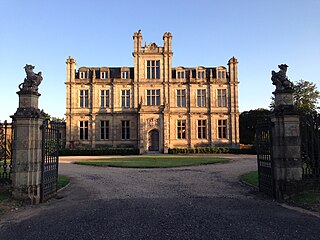
Bylaugh Hall, also known as Bylaugh Park, is a country house situated in the parish of Bylaugh in Norfolk, England.

Kingston Lacy is a country house and estate near Wimborne Minster, Dorset, England. It was for many years the family seat of the Bankes family who lived nearby at Corfe Castle until its destruction in the English Civil War after its incumbent owners, Sir John Bankes and Dame Mary, had remained loyal to Charles I.
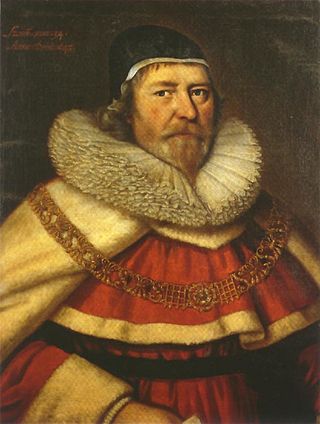
The Bankes family were prominent landed gentry in Dorset, England, for over 400 years. They owned large portions of land throughout Dorset and made significant contributions to the political history and development of the country.

Close House is a country estate near Heddon-on-the-Wall, Northumberland. The estate contains a Grade II* listed former mansion house, which is currently a private residence, and Close House Golf Club.

John Wynne was Bishop of St Asaph (1715–1727) and of Bath and Wells (1727–1743), having previously been principal of Jesus College, Oxford (1712–1720).

Grantley Hall is a Country house located in North Yorkshire, England. It is situated near Grantley, about 5 miles (8 km) to the west of Ripon, on the banks of the River Skell. It is listed Grade II* on the National Heritage List for England, and the Japanese garden at the hall is listed Grade II on the Register of Historic Parks and Gardens.
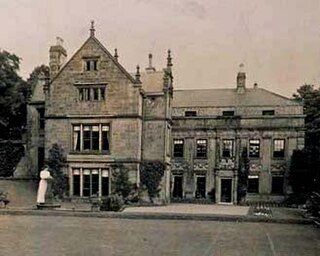
Brymbo Hall, one of Britain's lost houses, was a manor house located near Brymbo outside the town of Wrexham, North Wales. The house, reputed to have been partly built to the designs of Inigo Jones, was noted as the residence of 18th-century industrialist and ironmaster John "Iron-Mad" Wilkinson.
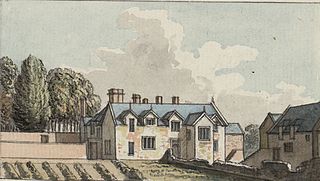
Walter Baldwyn Yates CBE was an English barrister, member of the London County Council and Crown Umpire under the Unemployment Insurance Scheme of 1911.
This article is about the particular significance of the year 1732 to Wales and its people.
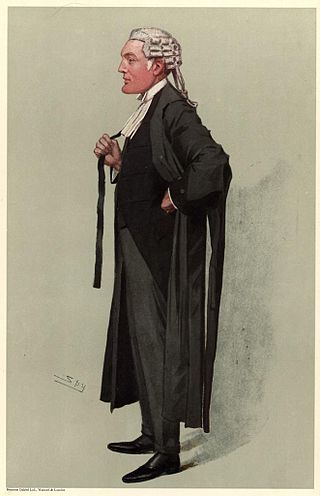
Sir John Eldon Bankes, was a Welsh judge of the King's Bench Division of the High Court of Justice, and later the Lord Justice of Appeal.
Sir Roger Mostyn, 5th Baronet was a Welsh landowner and politician who sat in the House of Commons for 38 years from 1758 to 1796.

The Grove is a heritage listed building of historical significance located south of Narberth, Pembrokeshire. It was built by Daniel Poyer in about 1680 shortly after he inherited the property from his father. The house remained in the Poyer family for the next two centuries. Today the Grove is a hotel and restaurant. It caters for special events particularly weddings.
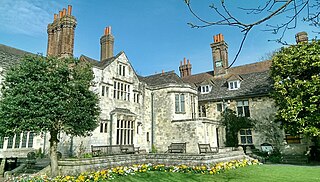
Southover Grange in Lewes, Sussex is a house of historical significance and is Grade II* listed on the English Heritage Register. It was built in 1572 by William Newton and owned by this family for the next three hundred years. After this it was the residence of many notable people until it was bought by the local Council in about 1945. Today it is owned by the East Sussex County Council. It now houses the Lewes Register Office which provides Marriage Ceremony Packages, civil partnerships and citizenship ceremonies. The gardens host events from local theatre to beer an gin festivals.

Merley House in Wimborne, Dorset, England, is a building of historical significance and is Grade I listed on the English Heritage Register. It was built in 1752 by the bibliophile Ralph Willett and remained in the Willett family until about 1875. For the next century it was the residence of many notable people. It is now a hotel.
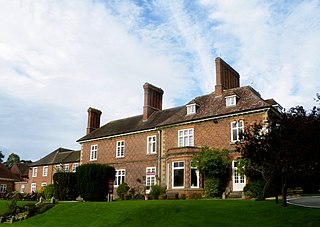
Albrighton Hall near Shrewsbury, Shropshire, is a house which is Grade II* listed on the National Heritage List for England. It was built in 1630 for the Ireland family and remained in this family for the next five generations until 1804. It was then the home of several notable people until 1953. In the 1990s it was converted into a hotel.

Penyard House, Weston under Penyard near Ross-on-Wye is a building of historical significance. It appears to have been built in about 1821 by a wealthy landowner John Partridge. It was the home of many notable residents for the next century until it was converted to a hotel in the 1930s. Today it is a hotel which provides restaurant services and caters for special events particularly weddings.

Sir John Conway, 2nd Baronet of Bodrhyddan Hall, Rhuddlan, Denbighshire was a British landowner and Tory politician who sat in the House of Commons between 1685 and 1721.

Northaw Place is a Grade II* listed former mansion house, later a school and children's home, in Northaw and Cuffley, Hertfordshire, England. Northaw Place was built circa 1690 by Sir George Hutchins, King's Serjeant and one of the Commissioners of the Great Seal. Cussans describes the Northaw estate as having once formed part of the manorial estate but it became detached from it in circa 1690 when Sir William Leman, second Baronet, and Lord of the Manor of Northaw, gave it to his daughter Sarah, on her marriage to Sir George Hutchins. It remained in private hands until the late 19th century, when it was converted into a school. It reverted to private ownership again in 1927, only to be purchased by Middlesex County Council after World War II and converted into a children's home. With the 1974 re-organisation of UK local government it passed to the London Borough of Haringey who used it as a Children's Assessment Centre until late 1979. In 1980 a planning application was made to convert Northaw Place to 10 dwellings. Permission was granted but the scheme was not implemented due to outstanding conditions of consent. A subsequent application to convert Northaw Place to offices was refused in 1982 (S6/0120/82). Another application was submitted in 1985 to convert Northaw Place to six dwellings (S6/0368/LB), and permission was granted. In 1986 Northaw Place was bought by Hitchins (Hatfield) Ltd, and a new planning application was submitted. This contained minor amendments from the previous application. As part of the conversion work the main house was divided from the stables / coach house to the west by the demolition of a link building. It has since been converted to residential accommodation.

Sir George Wynne, 1st Baronet, of Leeswood Hall, Flintshire, was a Welsh land owner and Whig politician who sat in the House of Commons from 1734 to 1742.

Barton Hall Hotel in Barton Seagrave near Kettering is a building of historical significance and is listed on the English Heritage Register. It was built in about 1550 and was the home of many notable residents over the next five centuries. Today it is a hotel which provides accommodation, restaurant facilities and caters for special events.
























